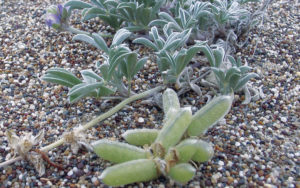Thea Venckus from Nicasio sent in this week’s Ask the Naturalist question:
Hi, I have lived on a ranch in Nicasio, for 13 years now. We used to have a multitude of western toads but I no longer see them. We still have abundant Pacific tree frogs, and bullfrogs in our deep pond. I was wondering what happened to all the toads?
The loss of Western toads in Nicasio could reflect the nationwide trend of declining amphibian populations but as is often the case, more research is needed.
Earlier this year the U.S. Geological Survey’s Amphibian Research and Monitoring Initiative released the first estimate of how fast we are losing amphibians (frogs, toads and salamanders) across the country. The study found there was a 3.7 percent average annual rate of decline for all populations of amphibians monitored, while species listed on the IUCN Red list are experiencing an average 11.6 percent decline. While these numbers seem slight, small declines build up dramatically over time.
“The Western toad was once a very common sight in the Bay Area but their populations are now in steady decline,” said Michael Starkey, Save the Frogs ecologist and advisory committee chair. “The common Pacific chorus frog and non-native American bullfrog are resilient species and can thrive almost anywhere in California.”
Over the past three years or so, unusual weather patterns in the Bay Area may have affected amphibian breeding seasons. December to February are generally the wettest months and the main breeding season for amphibians at lower elevations, said Jim McKissock, founder of Earthcare. But dry, hot spells during the wet season have caused problems for amphibians reliant on seasonal rain.
“If the season is too dry, males may not call and females may eventually just dump their eggs,” McKissock said. “As populations lose adults through attrition the chance of losing an entire population greatly increases without any offspring replacement.”
Gary Fellers, a USGS researcher emeritus based in Point Reyes, cites two other possible reasons— amphibian chytrid fungus and increased exposure to pesticide.
In his research, Fellers has studied the impact of pesticides on amphibians in the Sierra Nevada and suggests they have contributed to population decline. While pesticide concentrations are lower in Marin county than in the Central Valley or downwind areas such as the Sierra foothills, local pesticides may have contributed to the loss of toad populations.
The chytrid fungus (Batrachochytrium dendrobatidis) is one of the most significant global threats to amphibian populations. Amphibians “drink” water and absorb important electrolytes like sodium and potassium through their skin. With chytridiomycosis the skin becomes very thick, resulting in abnormal electrolyte levels that often prove deadly.
In a 2005-2007 study, the chytrid fungus was present in some toad populations in Point Reyes, but that doesn’t necessarily mean the toads are declining because of the fungus. McKissock said Western toads may or may not be killed by the fungus even when exposed, though.
A bird? A bug? Something strange in the natural world nearby? Ask us and we’ll find the answer!





